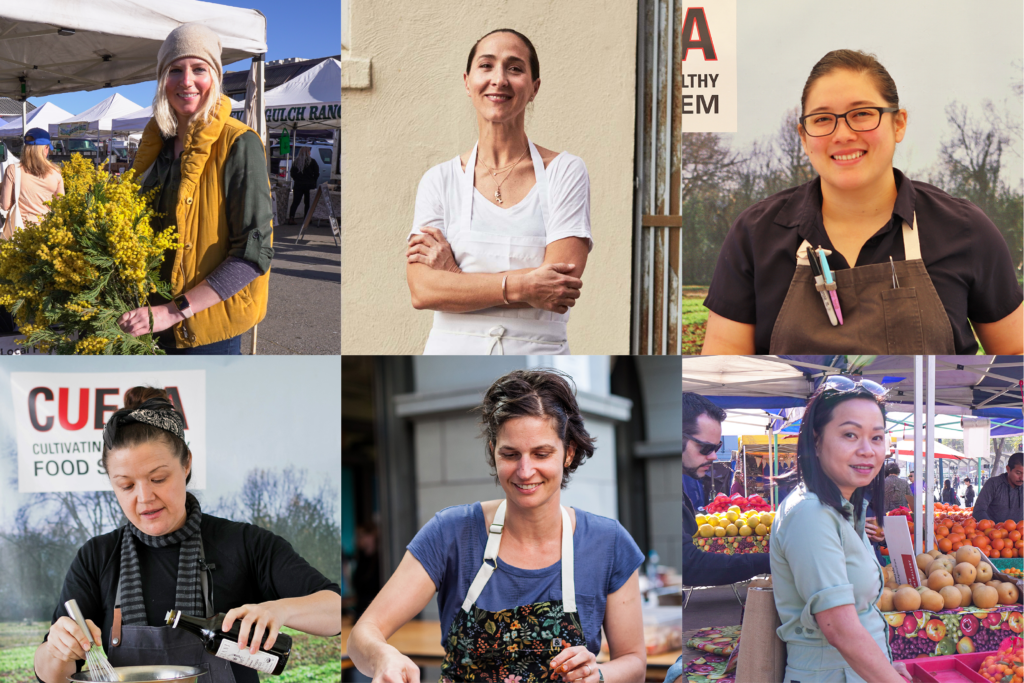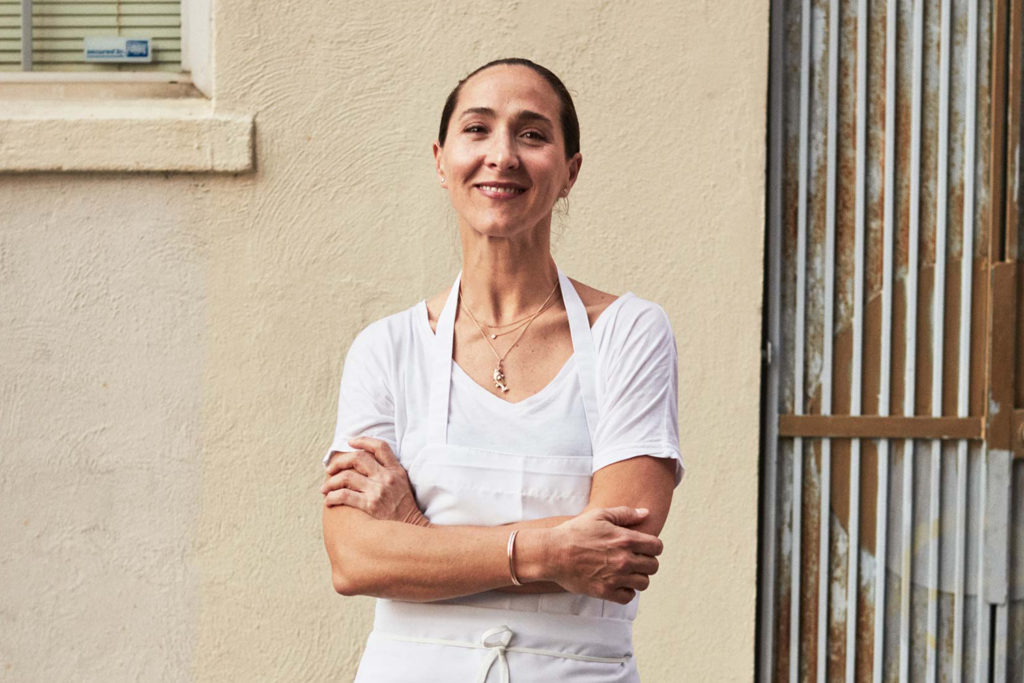6 Visionary Women Chefs Share How They’re Shaping the Future of Food
Savannah Kuang, CUESA Staff
March 6, 2020

San Francisco is known for being on the forefront of food trends, and women chefs are often leading the way, opening innovative restaurants, championing sustainability and equity, and supporting local farmers. Historically, it has not been easy for women to thrive in the food industry, and they still face systemic barriers. In the United States, women make up half the entry-level workforce in the food industry while also being underrepresented in leadership, including women of color.
Despite the barriers, women chefs are gaining increasing representation and recognition, paving the way for the next generation. In celebration of Women’s History Month, we asked six women chefs from some of the Bay Area’s top restaurants about changes they aim to create through their work in food—as well as what Ferry Plaza Farmers Market produce they’re highlighting on their menus as we head into spring.

Elisha Smiley, Delfina
I aim to educate my cooks and train them to become pastry chefs. I’m not only teaching them the recipes, but also coming up with dessert ideas, using organic ingredients, and cutting down on waste. The majority of my fresh produce come from the farmers market as part of my focus to support small farmers. At the end of the day, their produce tastes so much better, and I know where it comes from.
At Saturday farmers market right now, I’ve been getting Meyer lemons, passion fruit, and white guavas from Brokaw Ranch, lots of citrus from Frog Hollow Farm, Buddha’s hand from Blossom Bluff Orchards, green garlic from Fifth Crow Farm, and flowers from Four Sisters Farm.

Gabriela Cámara, Cala
I’m continuing to advocate for sustainability in food and agriculture, and especially the health of our oceans and marine life, which includes individuals who play such an important role in environmental stewardship. I am especially excited about Cala being a Zero Foodprint restaurant and the work that Anthony Myint and Karen Leibowitz are supporting with regenerative agriculture, and being a part of that change to become carbon-free.
I’m already starting to feel the nostalgia of citrus passing too fast at the farmers market! I’m looking forward to sprouted fava beans, though.

Gaby Maeda, State Bird Provisions
Food is definitely the fun part of my job as a chef, and it’s very important to what I do. I’m so proud of the cooks in our restaurant because a lot of them have moved on to different departments and others have become chefs. Being a part of that change is about holding everyone accountable in how we treat ourselves and each other, and I’m proud to continue being a part of that effort.
Asparagus season is around the corner, so I’m definitely going to be buying that once it’s here. We get scallions, broccoli, and other produce from Dirty Girl Produce, avocados from Brokaw Ranch, citrus from Rojas Family Farms, and kiwis from Four Sisters Farm. We really love to highlight Four Sisters on our menu, since we have known and loved Jill for a very long time.

Kim Alter, Nightbird
I used to work long hours and didn’t get paid enough, so creating a safe work environment and providing a space where people have good quality of life are the most important things, in my opinion. I hope to pass this on to others so they can also implement these practices in their kitchens. We’re also just about to become a Zero Foodprint restaurant and becoming carbon-free.
I’m currently waiting for Roscoe from Zuckerman’s Farm to harvest asparagus, but I’ve been using scallion scapes from Dirty Girl Produce on my menu right now in one of my courses, as well as their chicory. I also use Barhi dates from Flying Disc Ranch and potatoes from Little Organic Farm. Everything on my menu is from the farmers market.

Melissa Reitz, Locanda Osteria & Bar
It’s important for me to buy what’s in season, locally and sustainably. It lets the produce shine and people are more willing to try it, which can be revolutionary. I say revolutionary because not only will they think it’s delicious, but it can inspire them to try to make these dishes at home. That sort of inspiration can motivate people to explore at the farmers market and figure out what tastes good, which is pretty exciting to me.
I currently get avocados from Brokaw Ranch and spinach from Star Route Farms, but I do get produce from other farmers as well to highlight their flavors in my dishes.

Pim Techamuanvivit, Kin Khao and Nari
There are lots of Thai restaurants that were not set up with using the ingredients that I want to use and want to eat. I want to know where my food comes from, which is why I started Kin Khao and Nari. I want to show people the breadth and depth of Thai cuisine that may be different from what they’ve seen in other Thai restaurants here in the US. There’s so much more than that in my culture and the cuisine I grew up with, and I hope to change that through the approach of using local and seasonal ingredients while changing how people think of “ethnic” cuisines.
I always get cilantro roots from Annabelle at Star Route Farms and use them a lot in my cooking, as well as lots of citrus from Rojas Family Farms and K&J Orchards, and kiwis from Brokaw Ranch. I also get rabbit meat from Devil’s Gulch Ranch for my signature rabbit green curry dish.
Celebrate Women’s History Month by supporting women change makers, such as these women farmers and women-led food businesses.
Photos of Gabriela Cámara and Melissa Reitz courtesy of Marcus Nielson and Amanda Harris.
Topics: Chef
